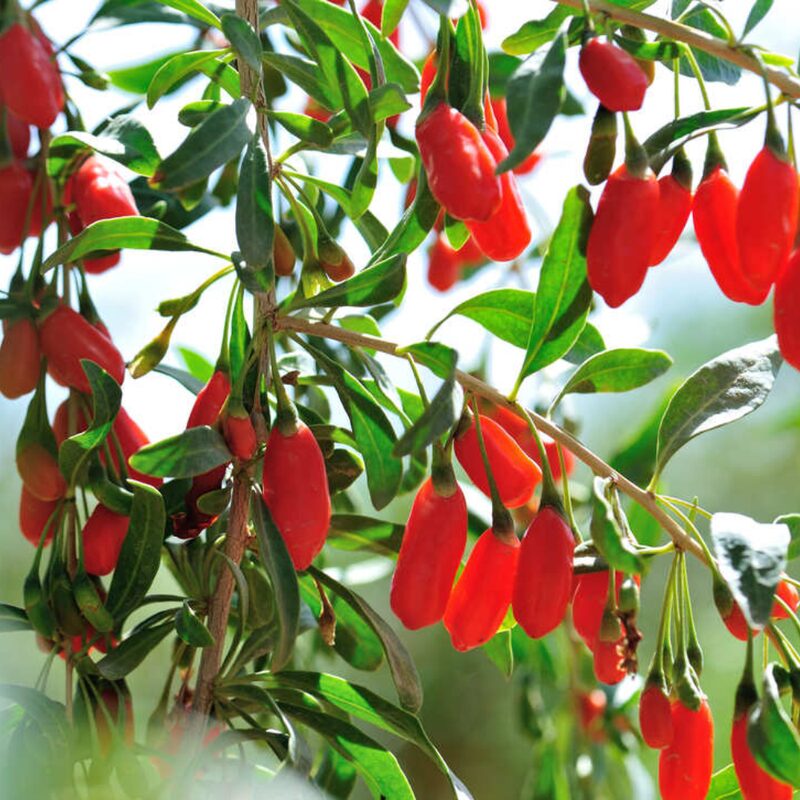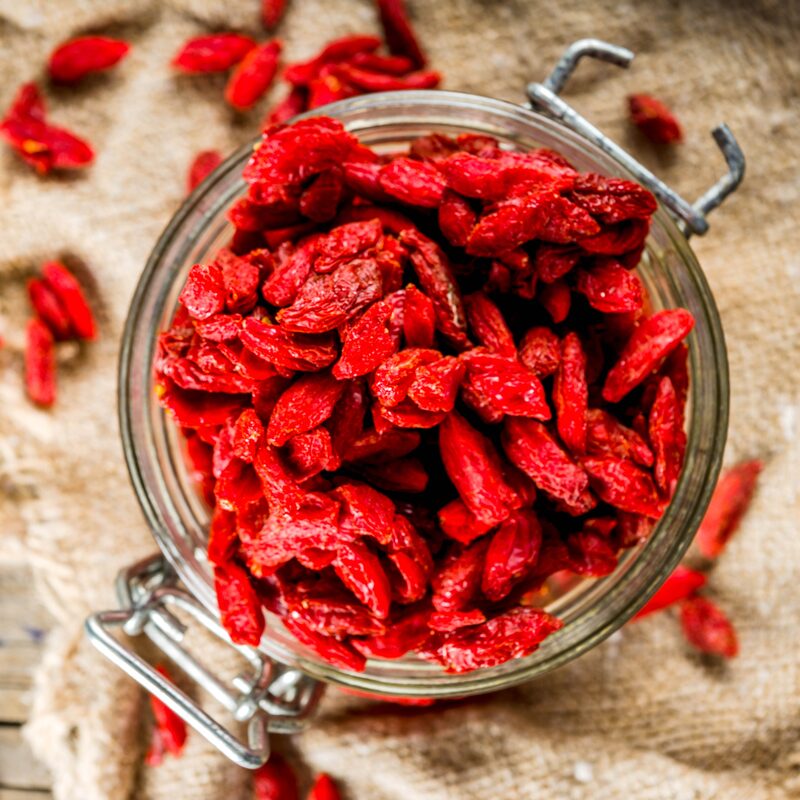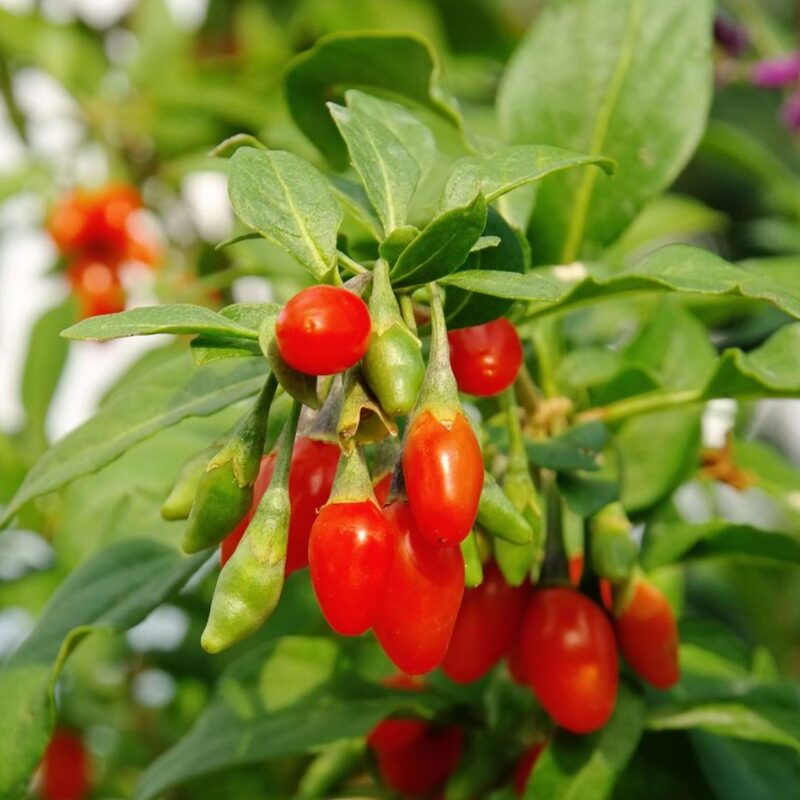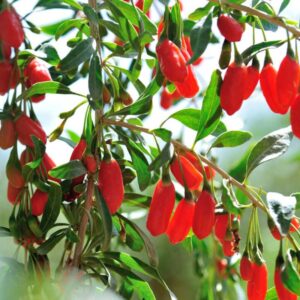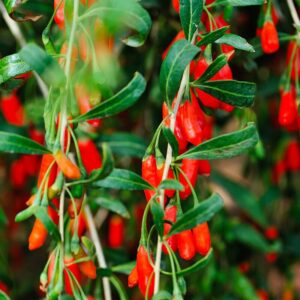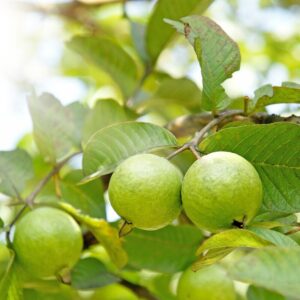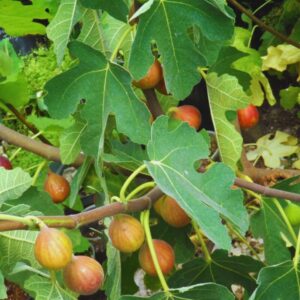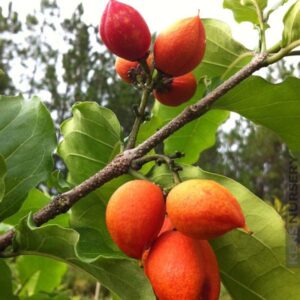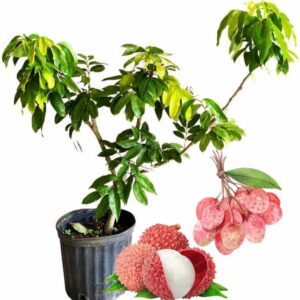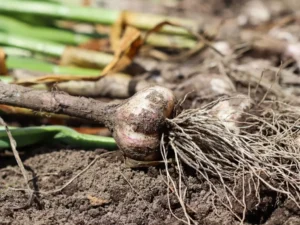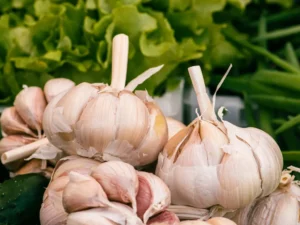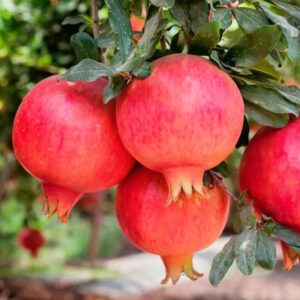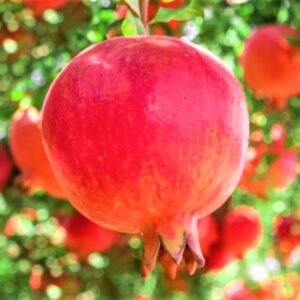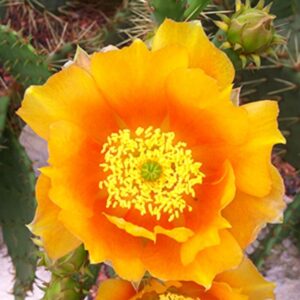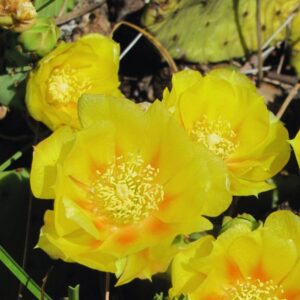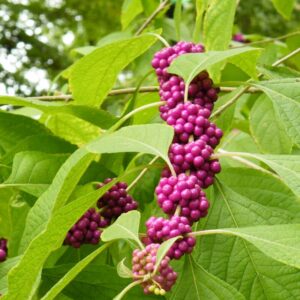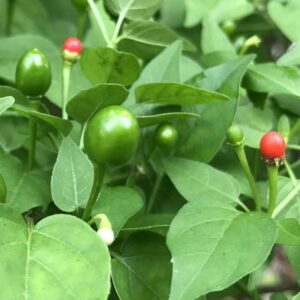2 Red Goji Berry Trees – Goji Berry Fruit Trees – Large – Red-Orange – Lycium barbarum
2 Red Goji Berry Trees – Goji Berry Fruit Trees – Large – Red-Orange – Lycium barbarum
Enhance your garden with 2 Red Goji Berry Trees, an abundant fruiting shrub that offers rich vitamins and antioxidants.
$28.99

With our Alive & Thrive Guarantee, we’ve got your back for the first 30 days! If you have any concerns about your plants, just reach out to us. Our team is here to help answer your questions and guide you in selecting the best plants for your garden, climate, and unique preferences. We're excited to help you create the garden of your dreams!
Discover the Benefits of Goji Berry Trees
The 2 Red Goji Berry Trees are a remarkable addition to any garden, offering abundant and early fruiting capabilities. These shrubs, native to China, produce stunning mauve flowers from June to September, followed by the ripening of red-orange fruits from August to October. With their larger fruits, Lycium barbarum ‘Dynamite’ variety is both bittersweet and rich in essential vitamins, minerals, and antioxidants.
Ideal Growing Conditions
To successfully grow your Goji Berry Trees, ensure they are planted in well-drained soil and receive full sunlight exposure. Planting in USDA Hardiness Zones 3-10 allows for optimal growth and fruit production. Regular watering and care will result in healthier plants and more abundant fruit harvests.
Care and Maintenance
Goji Berry Trees require minimal maintenance once established. Regular pruning encourages growth and fruit production, while ensuring you monitor for pests and diseases. Fertilizing in early spring will enhance growth, and mulching will help retain soil moisture.
Harvesting and Usage
The harvesting period for Goji Berries begins in late summer, and the fruits can be eaten fresh or dried for later consumption. Rich in antioxidants, these berries are celebrated for their health benefits, making them a valuable addition to your diet.
Frequently Asked Questions
- What is the ideal planting season for Goji Berry Trees? Plant in early spring or fall for best results.
- How much sunlight do these trees need? They require full sun exposure for optimal fruit production.
- What type of soil is recommended? Well-drained soil enriched with organic matter is ideal.
- What is the expected height of these trees? Goji Berry Trees typically reach 4-6 feet in height.
- Are Goji Berries resistant to pests? They have some resistance, but regular checks for pests are beneficial.
Related products
-
USDA Hardiness Zone
3-10 -
Soil type
Well-drained, organic-rich soil -
Sunlight Exposure
Full sunlight -
Expected Planting Period
Early spring or fall
Best Types of Ivy Plant for Houses: How to Choose the Perfect Ones for Your Home
Are you a garden lover looking to introduce some greenery into your home? Maybe you’ve
Nov
When to Harvest Garlic (Especially Fall-Planted Garlic)
TIMING IS EVERYTHING, they say – and for garlic, that truth hits with surprising accuracy.
Nov
11 of the Best Sweet Potato Varieties to Grow for Your Garden
If you’ve ever tried growing sweet potatoes, you know that picking the right variety can
Nov
The Comprehensive Guide to Growing Bay Leaf Plants for a Flavorful Garden
Imagine stepping into your garden, greeted by the earthy aroma of fresh bay leaves, their
Nov
Pruning Bougainvillea for Winter
Bougainvillea vines are known for their dazzling display of magenta, orange, and fuchsia bracts that
Nov
The Comprehensive Guide to Growing Clerodendrum Wallichii for a Stunning Garden
Imagine walking into a garden where delicate white flowers hang from graceful branches, their petals
Nov
8 Mistakes to Avoid When Planting Garlic That 90% of Gardeners Make
Planting garlic can be a rewarding experience, but many gardeners, especially beginners, end up making
Oct
Garlic Varieties: Everything You Need to Know Before Choosing the Right Type to Grow
If you’ve ever tried growing garlic, you know that choosing the right variety can make
Oct
-
USDA Hardiness Zone
3-10 -
Soil type
Well-drained, organic-rich soil -
Sunlight Exposure
Full sunlight -
Expected Planting Period
Early spring or fall
Discover the Benefits of Goji Berry Trees
The 2 Red Goji Berry Trees are a remarkable addition to any garden, offering abundant and early fruiting capabilities. These shrubs, native to China, produce stunning mauve flowers from June to September, followed by the ripening of red-orange fruits from August to October. With their larger fruits, Lycium barbarum ‘Dynamite’ variety is both bittersweet and rich in essential vitamins, minerals, and antioxidants.
Ideal Growing Conditions
To successfully grow your Goji Berry Trees, ensure they are planted in well-drained soil and receive full sunlight exposure. Planting in USDA Hardiness Zones 3-10 allows for optimal growth and fruit production. Regular watering and care will result in healthier plants and more abundant fruit harvests.
Care and Maintenance
Goji Berry Trees require minimal maintenance once established. Regular pruning encourages growth and fruit production, while ensuring you monitor for pests and diseases. Fertilizing in early spring will enhance growth, and mulching will help retain soil moisture.
Harvesting and Usage
The harvesting period for Goji Berries begins in late summer, and the fruits can be eaten fresh or dried for later consumption. Rich in antioxidants, these berries are celebrated for their health benefits, making them a valuable addition to your diet.
Frequently Asked Questions
- What is the ideal planting season for Goji Berry Trees? Plant in early spring or fall for best results.
- How much sunlight do these trees need? They require full sun exposure for optimal fruit production.
- What type of soil is recommended? Well-drained soil enriched with organic matter is ideal.
- What is the expected height of these trees? Goji Berry Trees typically reach 4-6 feet in height.
- Are Goji Berries resistant to pests? They have some resistance, but regular checks for pests are beneficial.
Related products
PLANTING & CARE
Best Types of Ivy Plant for Houses: How to Choose the Perfect Ones for Your Home
Are you a garden lover looking to introduce some greenery into your home? Maybe you’ve
Nov
When to Harvest Garlic (Especially Fall-Planted Garlic)
TIMING IS EVERYTHING, they say – and for garlic, that truth hits with surprising accuracy.
Nov
11 of the Best Sweet Potato Varieties to Grow for Your Garden
If you’ve ever tried growing sweet potatoes, you know that picking the right variety can
Nov
The Comprehensive Guide to Growing Bay Leaf Plants for a Flavorful Garden
Imagine stepping into your garden, greeted by the earthy aroma of fresh bay leaves, their
Nov
Pruning Bougainvillea for Winter
Bougainvillea vines are known for their dazzling display of magenta, orange, and fuchsia bracts that
Nov
The Comprehensive Guide to Growing Clerodendrum Wallichii for a Stunning Garden
Imagine walking into a garden where delicate white flowers hang from graceful branches, their petals
Nov
8 Mistakes to Avoid When Planting Garlic That 90% of Gardeners Make
Planting garlic can be a rewarding experience, but many gardeners, especially beginners, end up making
Oct
Garlic Varieties: Everything You Need to Know Before Choosing the Right Type to Grow
If you’ve ever tried growing garlic, you know that choosing the right variety can make
Oct

